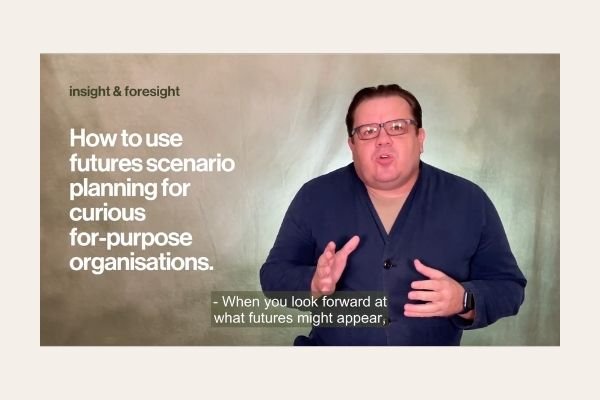foresights.
Sharing ideas, trends, issues and signals influencing the futures of organisations.
Search the blog;
Action Verbs. Words That Get Things Done.
Effective planning hinges on the clarity of your actions. Dive into the realm of action verbs - powerful instruments that infuse precision and momentum into your planning endeavors.
Why Long-Term Thinking Matters Most Right Now.
Looking for leadership advice? The current climate demands long-term thinking that has broad implications. Read this article to learn why and how long-term thinking can benefit you in the here and now.
Futures Scenario Planning.
Futures scenario planning is using future intelligence to inform alternative visions of possible, probable, and preferred futures, and interpreting how those futures might impact your organisation.
Elephants, Swans and Jellyfish for planning.
You can use the process of identifying Black Elephants, Swans and Jellyfish in your planning to drive new thinking, support diverse plans, build responsive systems and stretch your planning paradigms into longer time horizons.
Two Frames for Planning & Decision Making.
Here’s two frames to help you with your planning and decision making:
Plans=knowledge+assumptions,
and
performance=Plans(reality)
Change is happening.
Forward thinking leaders need to develop the ability to scan for signals, issues and trends that are developing now and create a view on how they might play across a range of futures. We also need to be able to anticipate change and get ready for what might happen next. In some cases, we need to be able to create change ourselves and help build the futures we want to see.
How to be a good ancestor.
It can be easy to believe that tomorrow will be like today—that customers will have the same demands, that businesses will operate in the same way, or that Governments will make similar decisions. These beliefs are comforting, in part because they suggest that nothing fundamental will change in our futures. But if we believe these things about futures, then we are limiting those who come after us to live in a world that is less than what it could be.
You don't have to fear the future.
Forward-thinking CEOs and Boards are using foresight to plan for tomorrow. They're looking 5,10,20 years into the future to see what might happen. By doing this, they're able to make today's decisions with more confidence and greater reliability.
Which futures will appear?
Which futures will appear? There are many different variations of futures emerging. It may sound far fetched but technology is advancing faster than ever before. Robotics and artificial intelligence could well advance to autonomous thought and action at some stage in the future. Robots may dance.
Three Tomorrows for planning in uncertainty.
A critical question that we must get used to dealing with is how we produce plans, make decisions and grow our organisations in the face of futures full of …
Foresight for our futures.
To improve the efficacy of our decision-making, we need to get better at using foresight. We need to…










